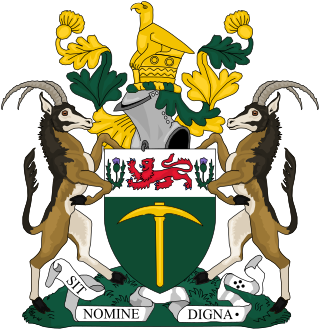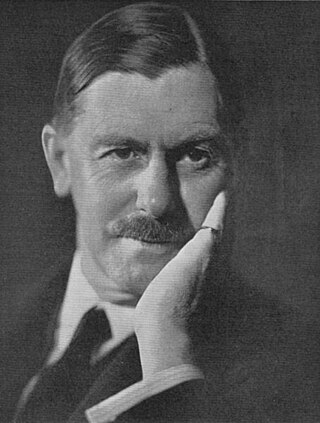 |
|---|
Advisory Council elections were held in Northern Rhodesia for the first time in July 1918. [1]
 |
|---|
Advisory Council elections were held in Northern Rhodesia for the first time in July 1918. [1]
Europeans in Northern Rhodesia had been calling for elected representation since the early 1910s. When Governor-General of South Africa Herbert Gladstone visited the territory in 1911 he met with farmers from Kafue who demanded that an Administrative Council be created. However, the British South Africa Company (BSAC) insisted that there were too few Europeans in the territory (1,184) to allow powers to be transferred. [2]
In February 1913 the North-Western Rhodesia Farmers' Association was established, primarily to campaign for the creation of a Legislative Council. [3] In December 1913 the BSAC announced that Europeans in the territory would be allowed to nominate two representatives that the Administrator would have to consult with. [4]
After a political lull caused by World War I, Leopold Moore began calling for a Legislative Council again in 1917. However, the BSAC deferred a decision until the Southern Rhodesian Legislative Council had made a decision 1917 on amalgamating the territories. Although the vote in April was in favour, the elected members had a majority against and the BSAC opted not to proceed. [5]
In July 1917 Resident Commissioner Herbert Stanley had started work on the establishment of an administrative council. Initial plans were for it to include the Administrator, five government officials and three elected members who would not have the right to vote. [5] Eventually it was decided that there would be five elected members. [1]
Northern Rhodesia was split into two constituencies, North-Western Rhodesia (four seats) and North-Eastern Rhodesia (one seat). Voting was restricted to British subjects of European descent over the age of 21 who had lived in the territory for at least six months and owned at least £150 of property. [1]
Only one candidate, J L Bruce, ran for the North-Eastern Rhodesia seat, and was returned unopposed. [1]
Defeated candidates included Burkitt, Gray and Oosthuizen. [6]
| Seat | Elected members | |
|---|---|---|
| North-Eastern Rhodesia | J L Bruce | |
| North-Western Rhodesia | Lewis Gordon | |
| George Hornley | ||
| Leopold Moore | ||
| W W Shelmerdine | ||
| Source: Gelfand | ||

Northern Rhodesia was a British protectorate in Southern Africa, now the independent country of Zambia. It was formed in 1911 by amalgamating the two earlier protectorates of Barotziland-North-Western Rhodesia and North-Eastern Rhodesia. It was initially administered, as were the two earlier protectorates, by the British South Africa Company (BSAC), a chartered company, on behalf of the British Government. From 1924, it was administered by the British Government as a protectorate, under similar conditions to other British-administered protectorates, and the special provisions required when it was administered by BSAC were terminated.

Southern Rhodesia was a landlocked, self-governing British Crown colony in Southern Africa, established in 1923 and consisting of British South Africa Company (BSAC) territories lying south of the Zambezi River. The region was informally known as South Zambesia until annexation by Britain, at the behest of Cecil Rhodes's British South Africa Company. The bounding territories were Bechuanaland (Botswana), Northern Rhodesia (Zambia), Portuguese Mozambique (Mozambique) and the Transvaal Republic.

The British South Africa Company was chartered in 1889 following the amalgamation of Cecil Rhodes' Central Search Association and the London-based Exploring Company Ltd, which had originally competed to capitalize on the expected mineral wealth of Mashonaland but united because of common economic interests and to secure British government backing. The company received a Royal Charter modelled on that of the British East India Company. Its first directors included The 2nd Duke of Abercorn, Rhodes himself, and the South African financier Alfred Beit. Rhodes hoped BSAC would promote colonisation and economic exploitation across much of south-central Africa, as part of the "Scramble for Africa". However, his main focus was south of the Zambezi, in Mashonaland and the coastal areas to its east, from which he believed the Portuguese could be removed by payment or force, and in the Transvaal, which he hoped would return to British control.

Elections in Zambia take place within the framework of a multi-party democracy and a presidential system. The President and National Assembly are simultaneously elected for five-year terms.

Sir Charles Patrick John Coghlan,, was a lawyer and politician who served as Premier of Southern Rhodesia from 1 October 1923 to his death. Having led the responsible government movement in the territory during the latter days of Company rule, he was Southern Rhodesia's first head of government after it became a self-governing colony within the British Empire.
The Southern Rhodesia Legislative Council election of March 17, 1902 was the second election to the Legislative Council of Southern Rhodesia. No change was made in the administration of the elections compared with the first elections three years previously, so the Legislative Council continued to comprise ten voting members: the Administrator of Southern Rhodesia ex officio, five members nominated by the British South Africa Company, and four members elected by registered voters from two electoral districts. The Resident Commissioner of Southern Rhodesia, Sir Marshal James Clarke, also sat on the Legislative Council ex officio but without the right to vote.
The Southern Rhodesia Legislative Council election of 18 March 1914 was the sixth election to the Legislative Council of Southern Rhodesia. The Legislative Council had resolved in 1913 that it should have twelve elected members, together with six members nominated by the British South Africa Company, and the Administrator of Southern Rhodesia. The Resident Commissioner of Southern Rhodesia also sat on the Legislative Council ex officio but without the right to vote. This office was first held by Robert Burns-Begg, from 1 April 1915 by Herbert James Stanley, and from 1 April 1918 by Crawford Douglas Douglas-Jones.
Legislative Council elections were held in Southern Rhodesia on 30 April 1920, the seventh elections to the Legislative Council.
Federal elections were held in the Federation of Rhodesia and Nyasaland on 15 December 1953. They were the first elections to the Legislative Assembly of the federation, which had been formed a few months before. The elections saw a landslide victory for the Federal Party under Godfrey Huggins, who had been Prime Minister of Southern Rhodesia for the past 20 years.

The Legislative Council of Southern Rhodesia was the inaugural governing body for the British South Africa Company (BSAC) territory of Southern Rhodesia before its replacement by the Southern Rhodesian Legislative Assembly in 1923, when the country achieved responsible government, and duly became a self-governing colony within the British Empire.

The Legislative Assembly of Rhodesia was the legislature of Southern Rhodesia and then Rhodesia from 1924 to 1970.
Europeans first came to the region in southern Africa today called Zimbabwe in the sixteenth century, when Portuguese colonials ventured inland from Mozambique and attacked the Kingdom of Mutapa, which then controlled an area roughly equivalent to eastern Zimbabwe and western Mozambique. Portuguese influence over Mutapa endured for about two centuries before fading away during the 1690s and early-1700s (decade). During the year of 1685, French Huguenots emigrated to present-day South Africa and whilst some settled there, others moved further north into the continent. Those who did, settled within modern-day Zimbabwe, Mozambique and Botswana, and co-existed with the indigenous people; most of whom, in Zimbabwe, were the Naletale people.

General elections were held in Northern Rhodesia on 30 October 1962, with by-elections for several seats held on 10 December. Although the United Federal Party won the most seats in the Legislative Council, and Northern Rhodesian African National Congress leader Harry Nkumbula had made a secret electoral pact with the UFP, Nkumbula decided to form a government with the United National Independence Party.

General elections were held in Northern Rhodesia on 19 February 1954. The result was a victory for the Federal Party, which won 10 of the 12 elected European seats in the Legislative Council.

General elections were held in Northern Rhodesia on 20 March 1959, although voting did not take place in two constituencies until 9 April. The United Federal Party (UFP) was expected to win the elections, and did so by taking 13 of the 22 elected seats on the Legislative Council.

General elections were held for the first time in Nyasaland on 15 March 1956.

Godfrey Martin Huggins, 1st Viscount Malvern, was a Rhodesian politician and physician. He served as the fourth Prime Minister of Southern Rhodesia from 1933 to 1953 and remained in office as the first prime minister of the Federation of Rhodesia and Nyasaland until October 1956, becoming the longest serving prime minister in British Commonwealth history, until 1961.

A referendum on amalgamation with Southern Rhodesia was held in Northern Rhodesia in February 1922 alongside Advisory Council elections. The proposal was rejected by 82% of voters, who were generally in favour of the territory becoming a Crown colony with a Legislative Council.

Advisory Council elections were held in Northern Rhodesia in February 1922. Candidates opposed to amalgamation with Southern Rhodesia received 1,117 votes, whilst candidates supportive of the proposal received 310.

Advisory Council elections were held in Northern Rhodesia in April 1920.